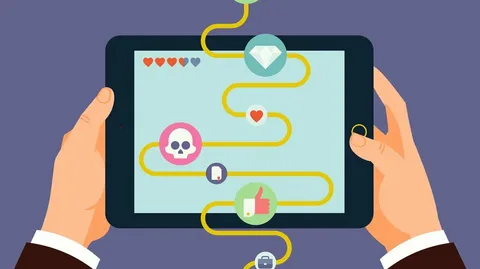Drive Revenue Growth How Gamification Revolutionizes Sales
In the ever-evolving landscape of sales and marketing, businesses are constantly seeking innovative strategies to drive revenue growth and gain a competitive edge. One such strategy that has gained widespread attention and adoption is gamification in sales. Gamification involves incorporating game-like elements, such as competition, rewards, and challenges, into non-game contexts to motivate and engage individuals. When applied to sales processes, gamification has the potential to revolutionize the way businesses interact with customers, incentivize sales teams, and ultimately drive revenue growth.
Table of Contents
ToggleUnderstanding the Impact of Gamification in Sales
At its core, gamification in sales taps into fundamental principles of human psychology and behavior to influence decision-making and drive desired actions. By leveraging intrinsic motivators such as achievement, recognition, and progress, businesses can create compelling sales experiences that resonate with both customers and sales professionals. For customers, gamification adds an element of fun and excitement to the buying process, making it more enjoyable and rewarding. Whether it’s earning points for completing purchases, unlocking exclusive rewards, or competing with peers on leaderboards, gamified sales experiences captivate the attention of consumers and encourage repeat interactions, leading to increased sales and revenue.
Benefits of Gamification for Sales Growth
The integration of gamification into sales processes offers a multitude of benefits for businesses looking to drive revenue growth and enhance customer engagement. One of the key advantages is increased engagement, as gamified experiences are inherently more interactive and immersive than traditional sales approaches. By providing customers with entertaining and rewarding experiences, businesses can strengthen brand loyalty, drive repeat purchases, and foster long-term relationships. Moreover, gamification enables businesses to collect valuable data and insights into customer behavior, preferences, and purchasing patterns, allowing them to tailor their sales strategies for maximum effectiveness and ROI.
Empowering Sales Teams Through Gamification
In addition to its impact on customers, gamification also empowers sales teams and drives performance improvement within organizations. By introducing game mechanics such as leaderboards, badges, and challenges, businesses can motivate sales professionals to strive for excellence and achieve their targets. Gamified sales platforms provide real-time feedback and recognition, fostering a culture of healthy competition and collaboration among team members. Furthermore, gamification enables sales managers to identify top performers, pinpoint areas for improvement, and implement targeted coaching and training programs to optimize team performance and drive revenue growth.
Case Studies: Real-World Success Stories
To illustrate the transformative power of gamification in revolutionizing sales and driving revenue growth, let’s examine a few real-world case studies of businesses that have successfully implemented gamified sales strategies. One notable example is Duolingo, a language-learning platform that gamifies the learning experience by incorporating elements such as leveling up, earning rewards, and competing with friends. Through gamification, Duolingo has been able to engage users more effectively, leading to increased retention and revenue generation. Another compelling case study comes from Starbucks, which introduced a gamified loyalty program called Starbucks Rewards. By rewarding customers with stars for purchases and offering personalized challenges and incentives, Starbucks has been able to drive customer engagement, increase sales, and strengthen brand loyalty, ultimately driving revenue growth for the company.
Conclusion
In conclusion, gamification represents a powerful and innovative approach to revolutionizing sales and driving revenue growth for businesses across industries. By incorporating game-like elements into sales processes, businesses can create engaging and rewarding experiences for both customers and sales teams, leading to increased sales, improved customer loyalty, and sustainable business growth. As businesses continue to embrace digital transformation and consumer-centric strategies, gamification will undoubtedly play a central role in shaping the future of sales and marketing, driving revenue growth and competitive advantage in the years to come.

